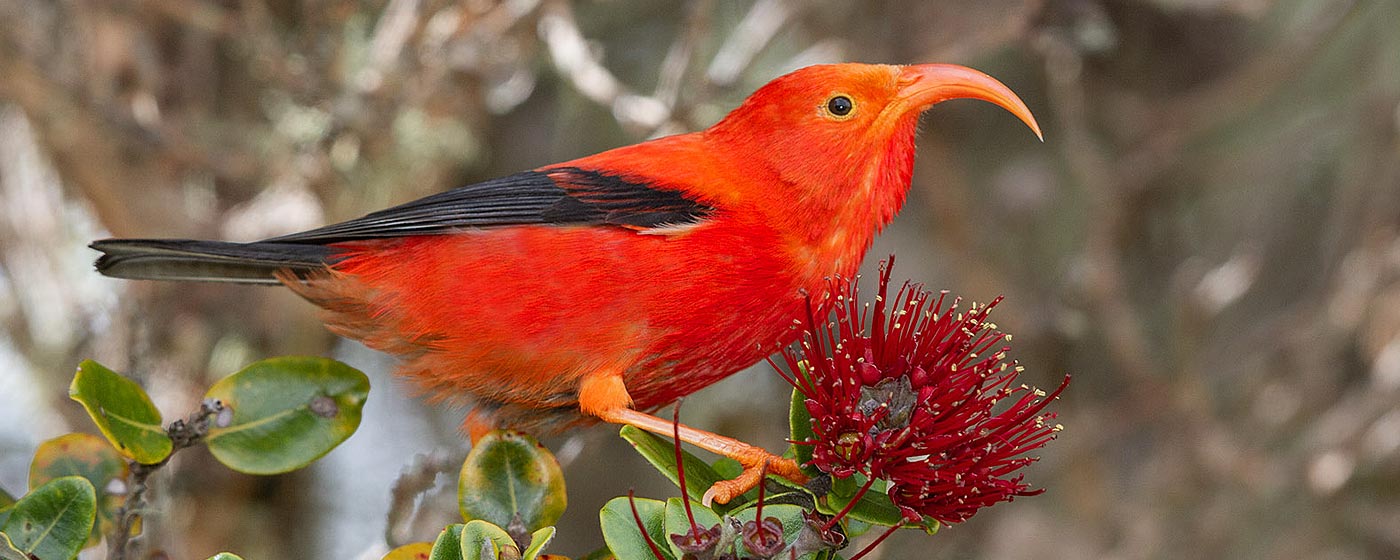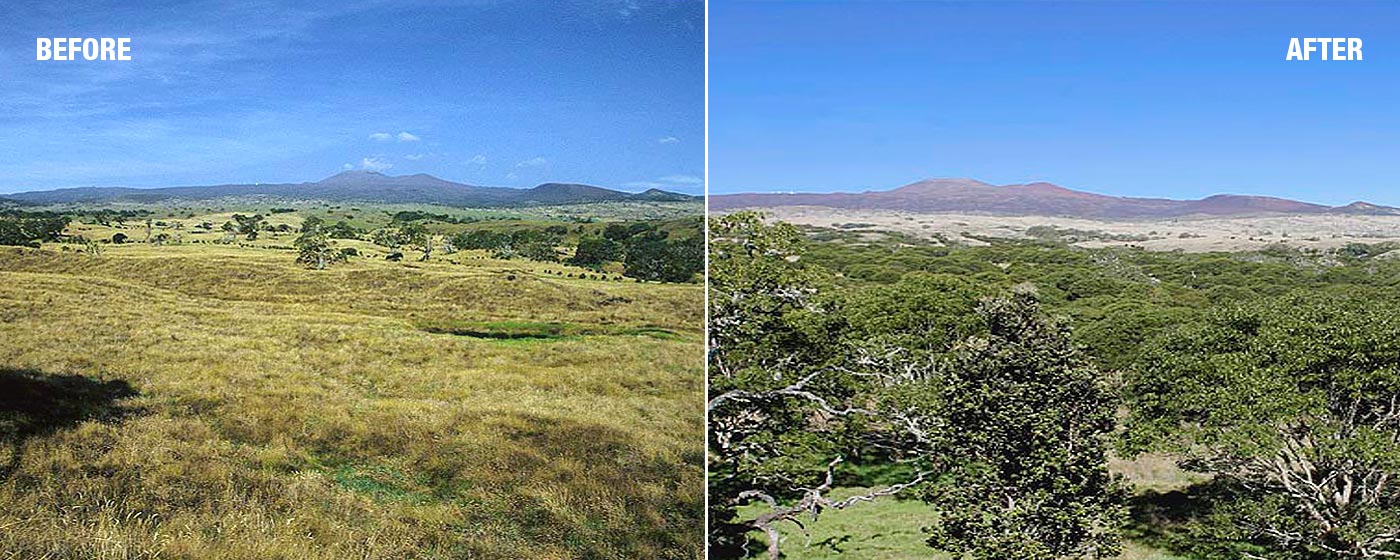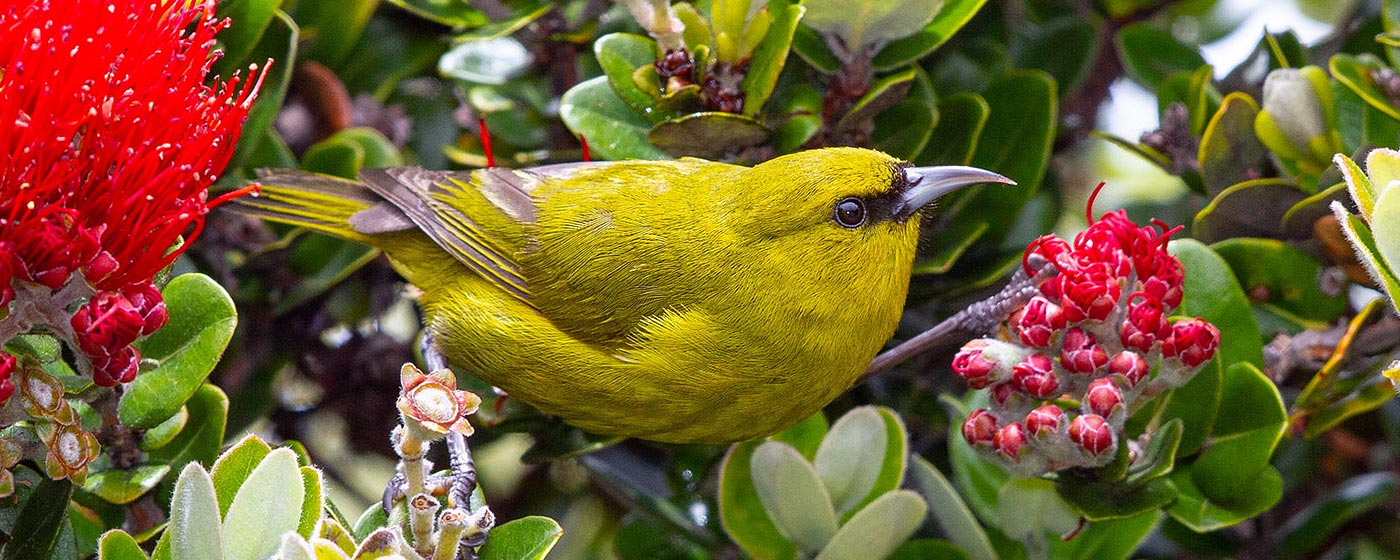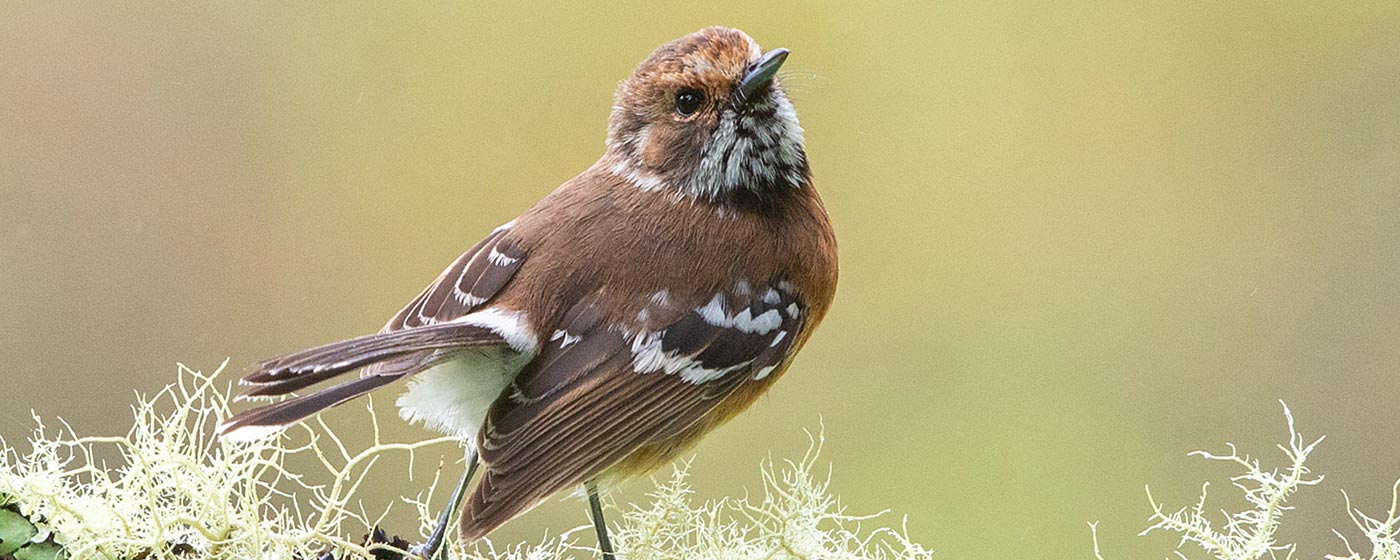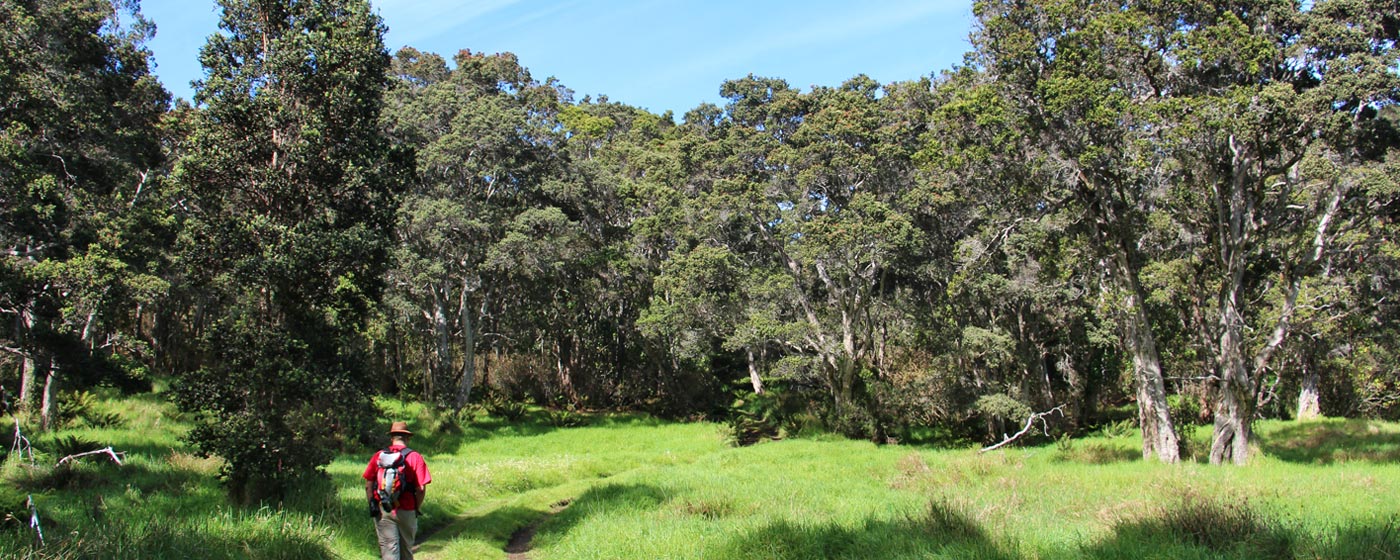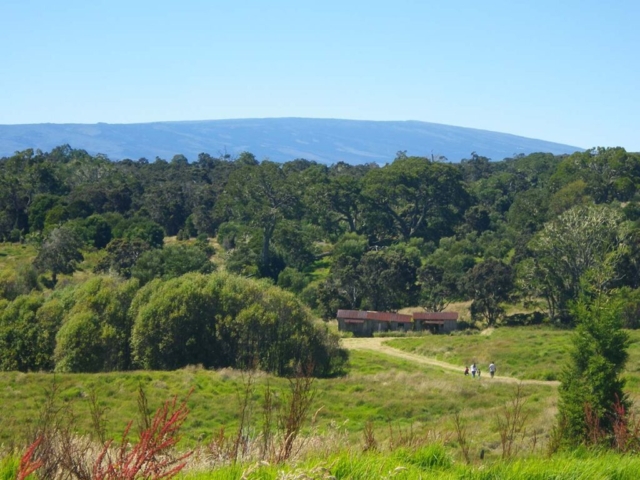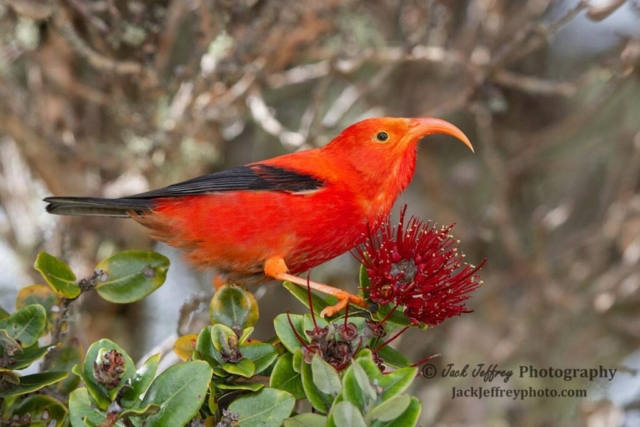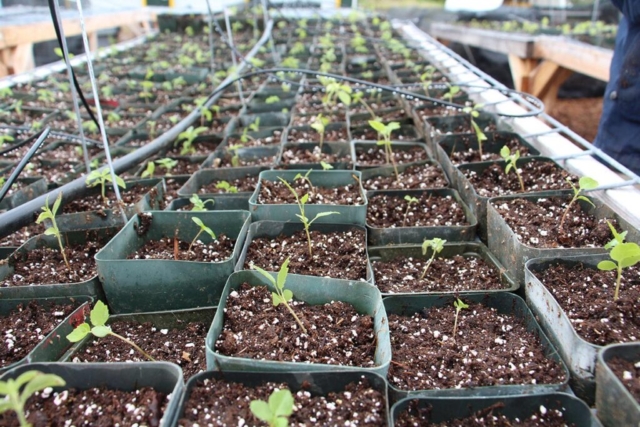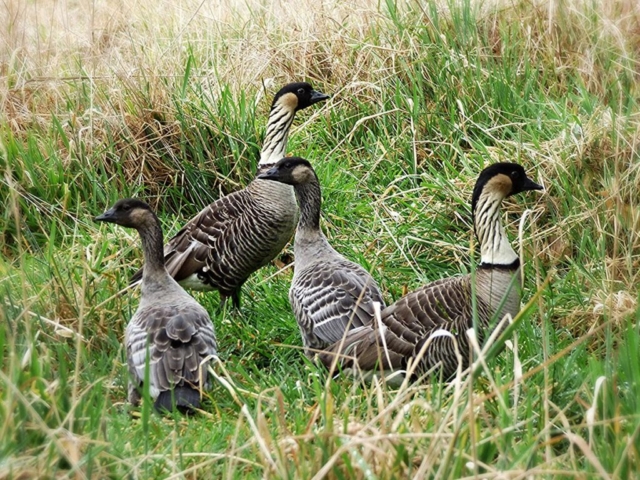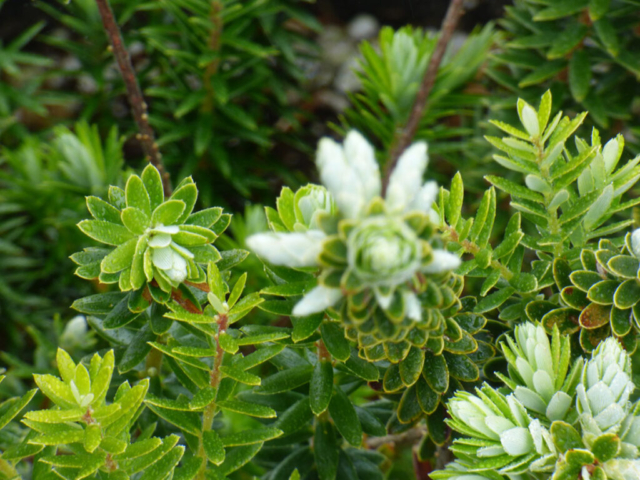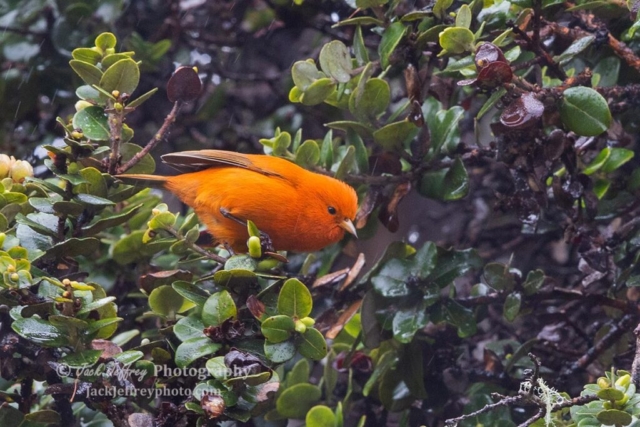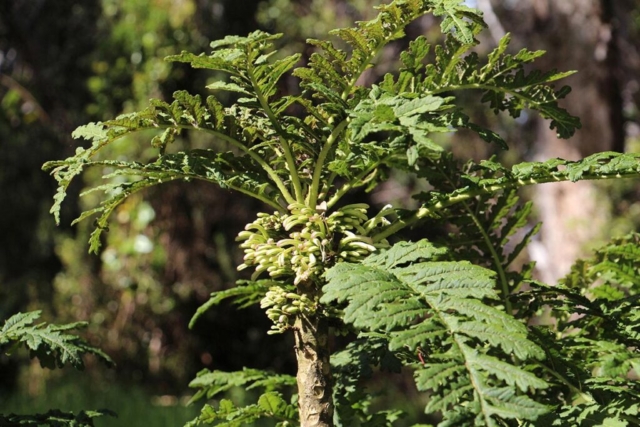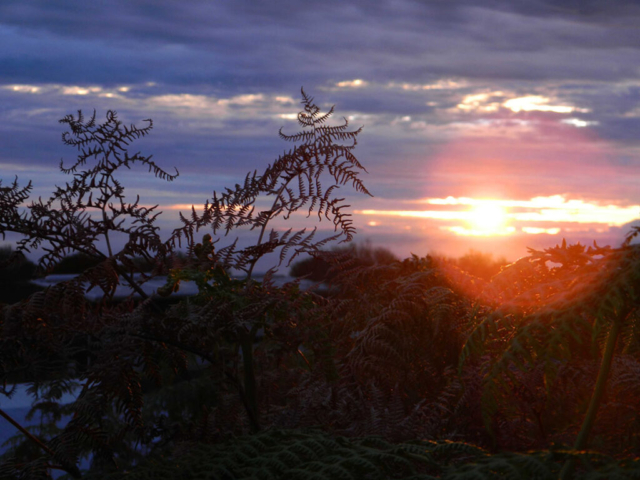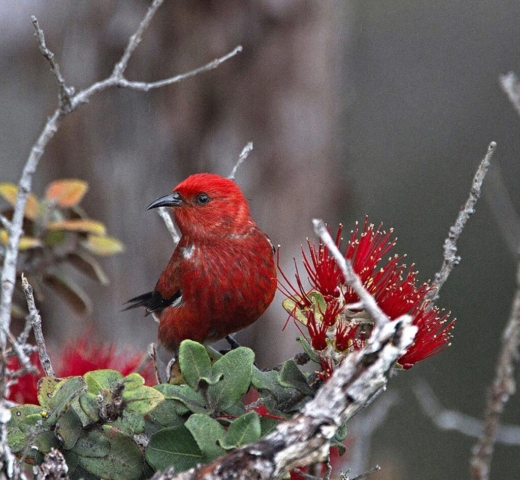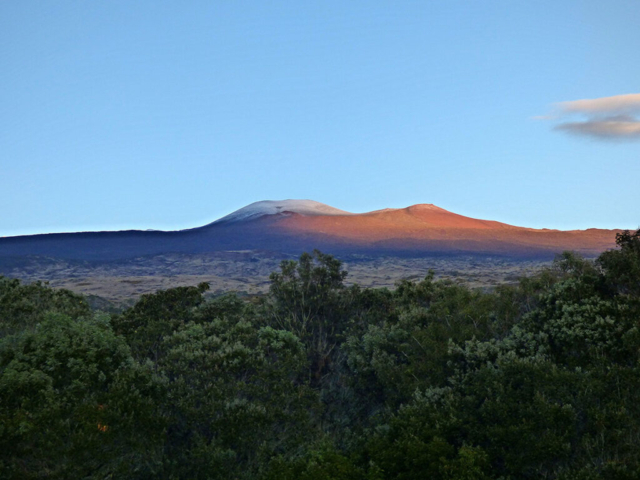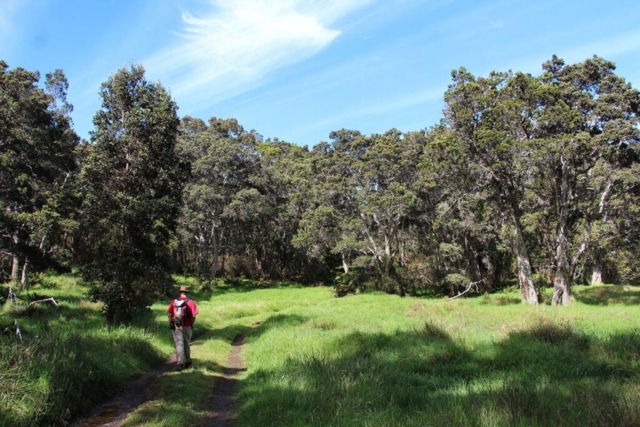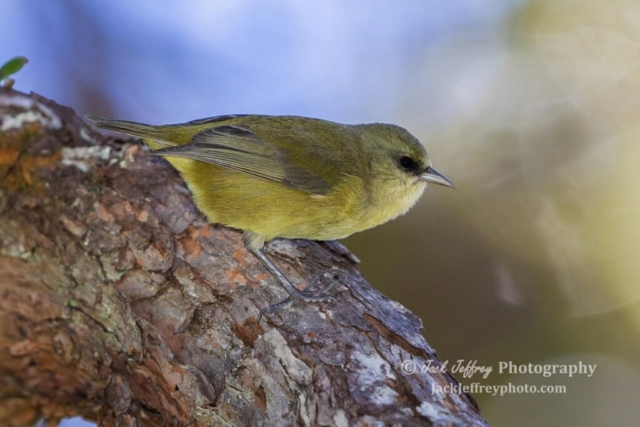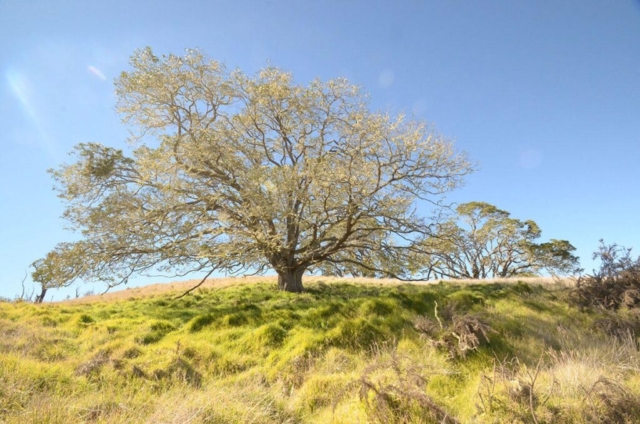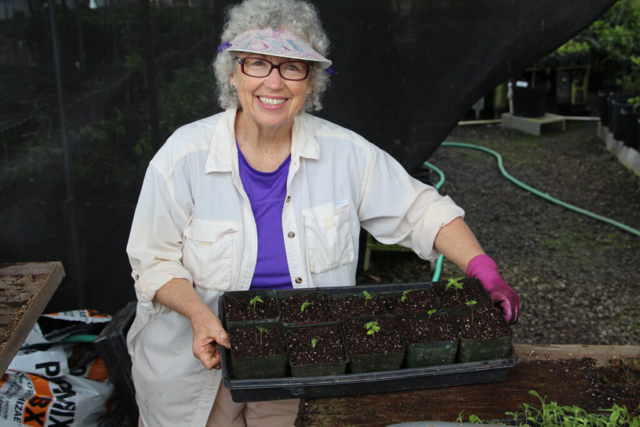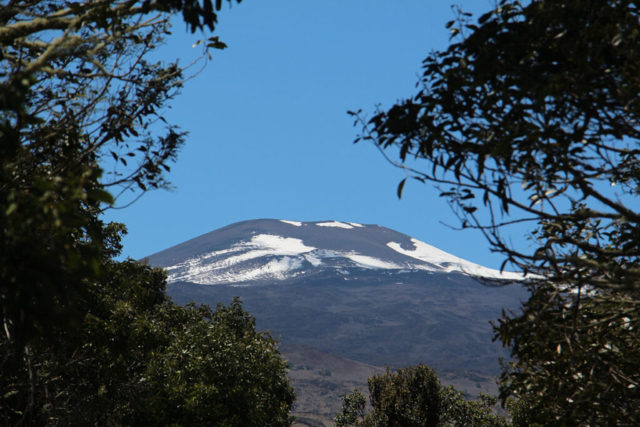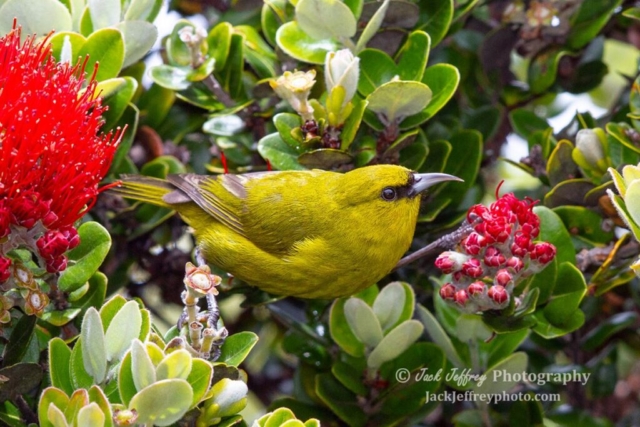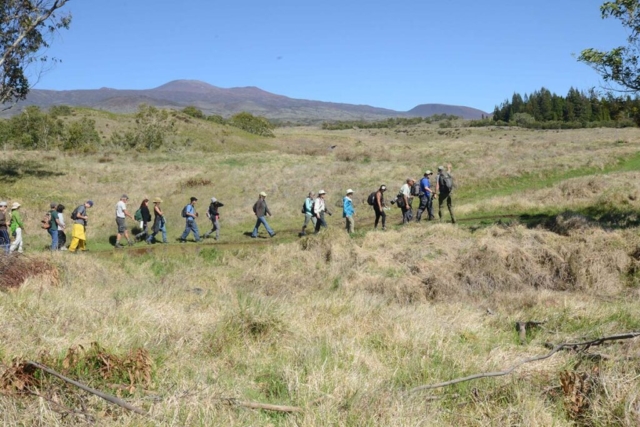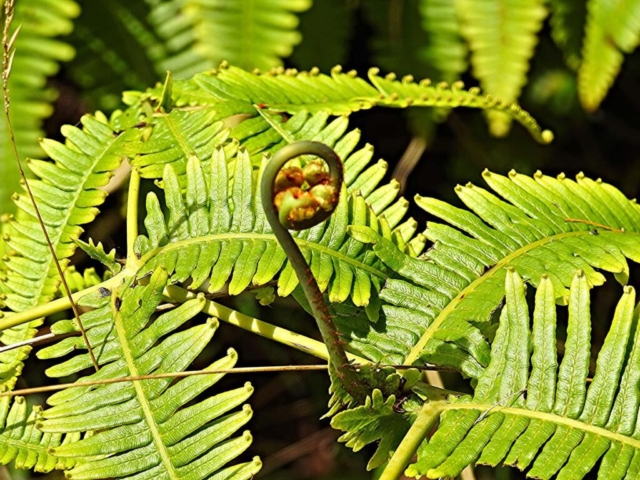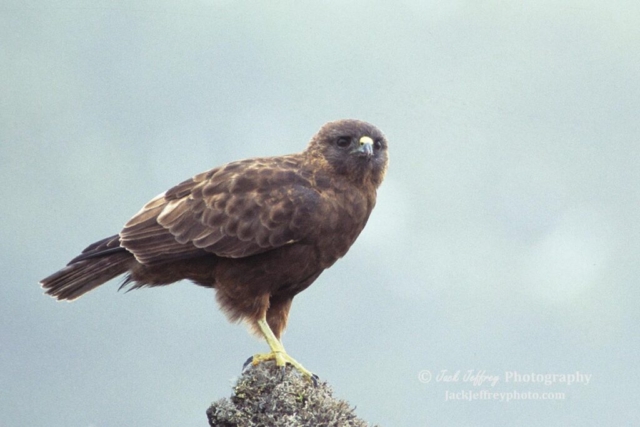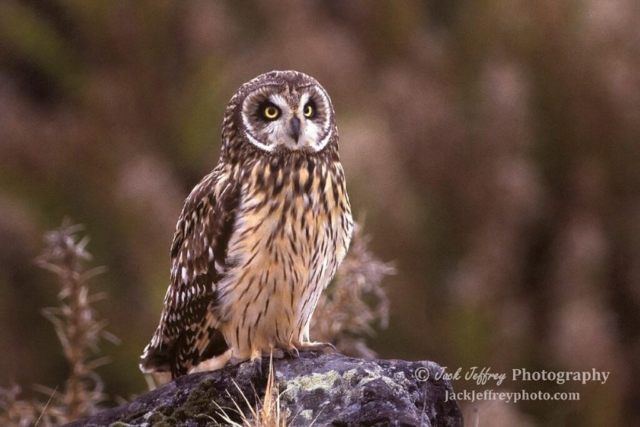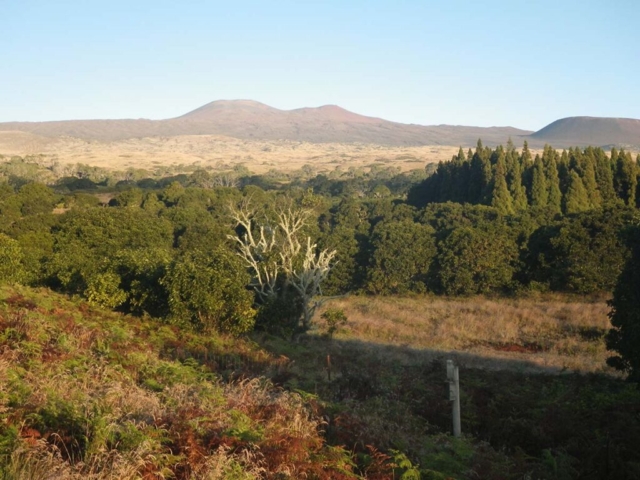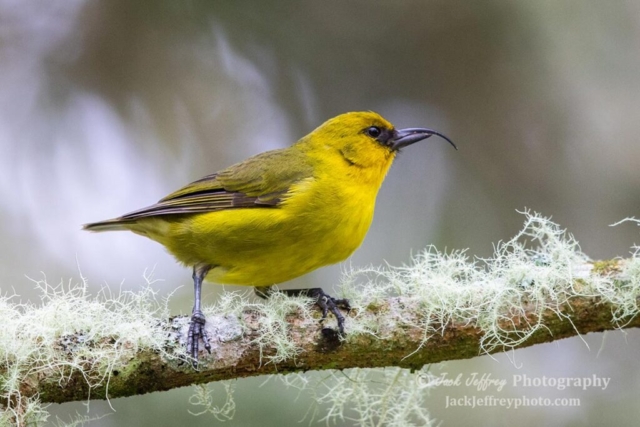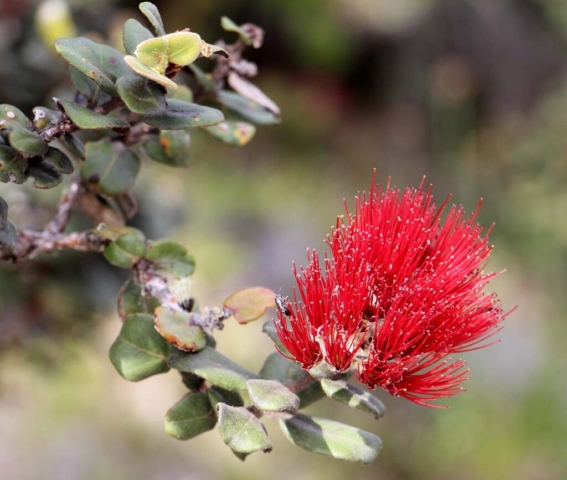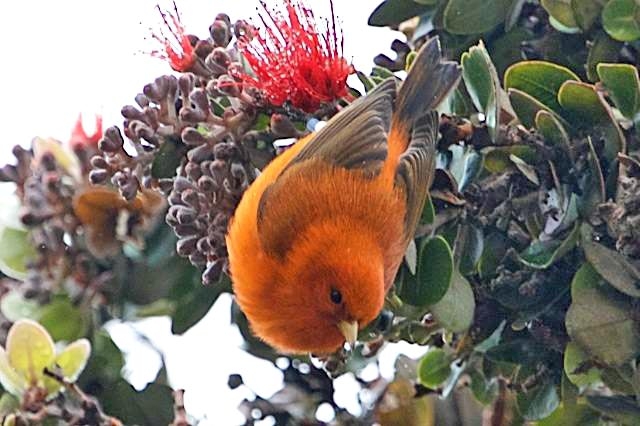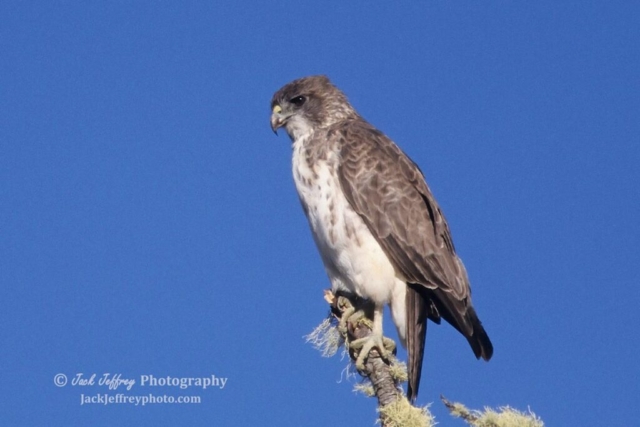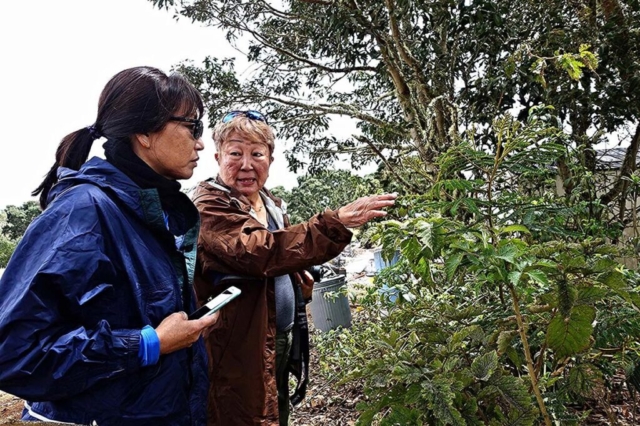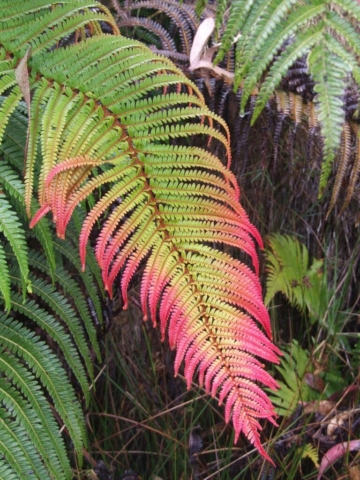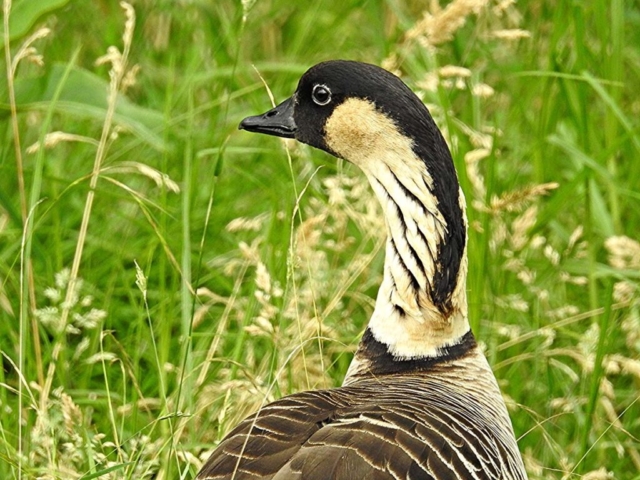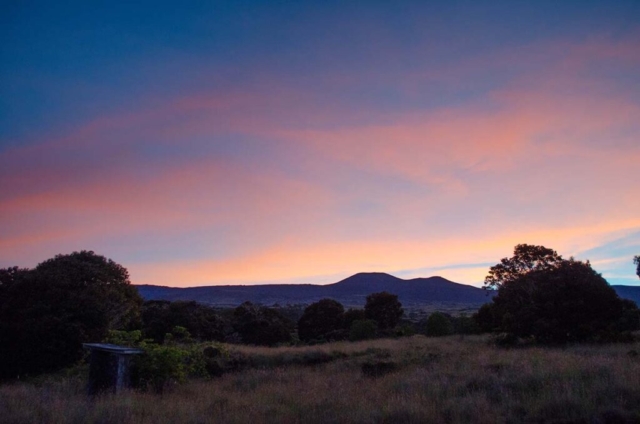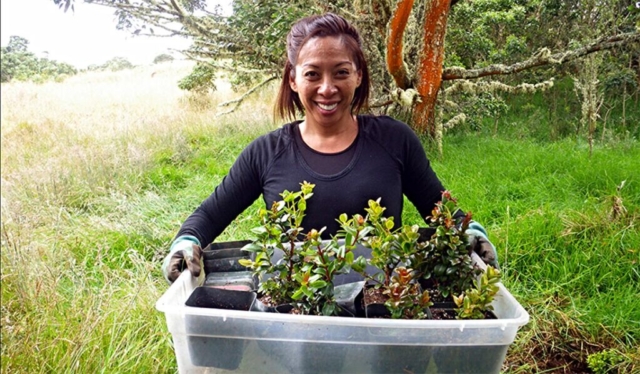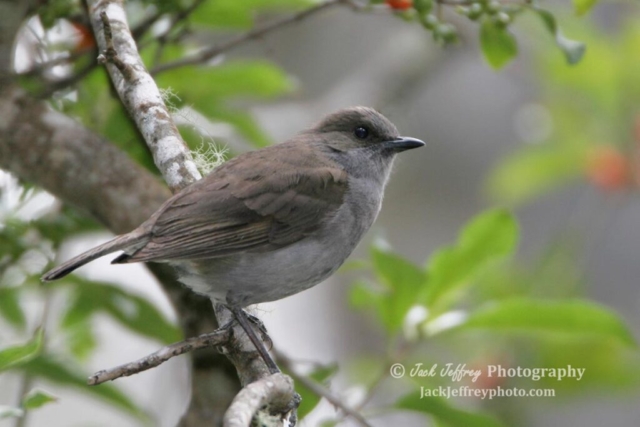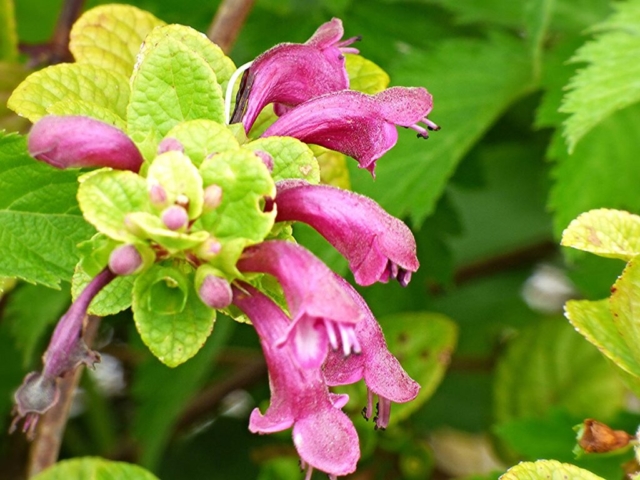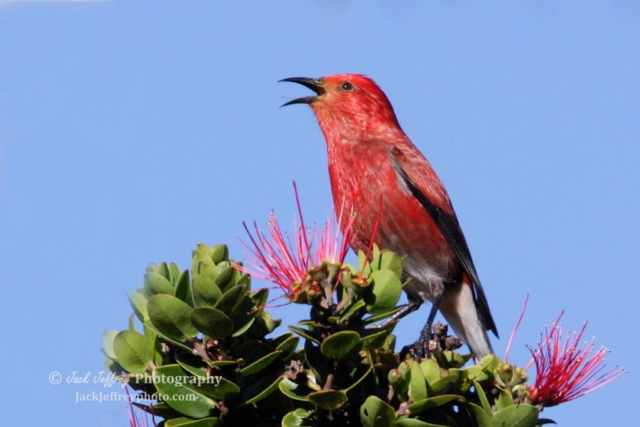Friends of Hakalau Forest National Wildlife Refuge
A nonprofit devoted to conserving the unique flora and fauna of Hawai’i Island
Hakalau Forest National Wildlife Refuge, established in 1985 by the U.S. Fish and Wildlife Service, consists of two distinct parcels. The Hakalau Forest Unit is a 32,830 acre parcel on the windward slopes of Mauna Kea on Hawai’i Island. In 1997 the U.S. Fish and Wildlife Service purchased 5,300 acres south of Kailua-Kona, on the slopes of Mauna Loa, which became the Kona Forest Unit. The Kona Forest Unit has grown to 16,060 acres through acquisitions from McCandless Ranch. The total refuge area of the two units combined is approximately 48,890 acres that are focused on the protection of native Hawaiian forest birds and their forest habitat.
The higher elevation Hakalau Forest Unit contains some of the finest remaining stands of native montane rain forest in Hawai’i and habitat for 29 critically endangered species including seven birds, one insect, one mammal and 20 plants found nowhere else in the world. Currently, it is the only place in Hawai’i where native forest bird populations are stable or increasing.
The lower elevation Kona Forest Unit is predominantly ‘ōhi‘a (Metrosideros polymorpha) trees with an understory of nonnative trees and shrubs and home to a number of endangered birds, plants and one insect. This area was home to the last wild pair of ʻalalā (Corvus hawaiiensis) in 2002. The primary purpose of this unit is to protect, conserve and manage this native forest for threatened or endangered species.
FRIENDS OF HAKALAU FOREST NATIONAL WILDLIFE REFUGE SETS GOAL OF $400,000 FOR
2025 FALL ENDOWMENT CAMPAIGN
2025 is the year of the Hawaii ʻĀkepa.
Endangered Hawaiian birds, including the Hawaiʻi ʻĀkepa, have a future IF we can build the resources to assist in the critical management that must be done to restore and maintain healthy habitat in the Koa-ʻŌhiʻa forests of the Hakalau Forest National Wildlife Refuge (NWR).
Found only on Hawaiʻi Island, the Hawaiʻi ʻĀkepa is one of the islandʻs endangered honeycreepers. This interesting bird has their lower mandible slightly offset to improve foraging efficiency on ʻŌhiʻa leaf clusters. They use their bill to pry open leaves and flower buds looking for small arthropods.
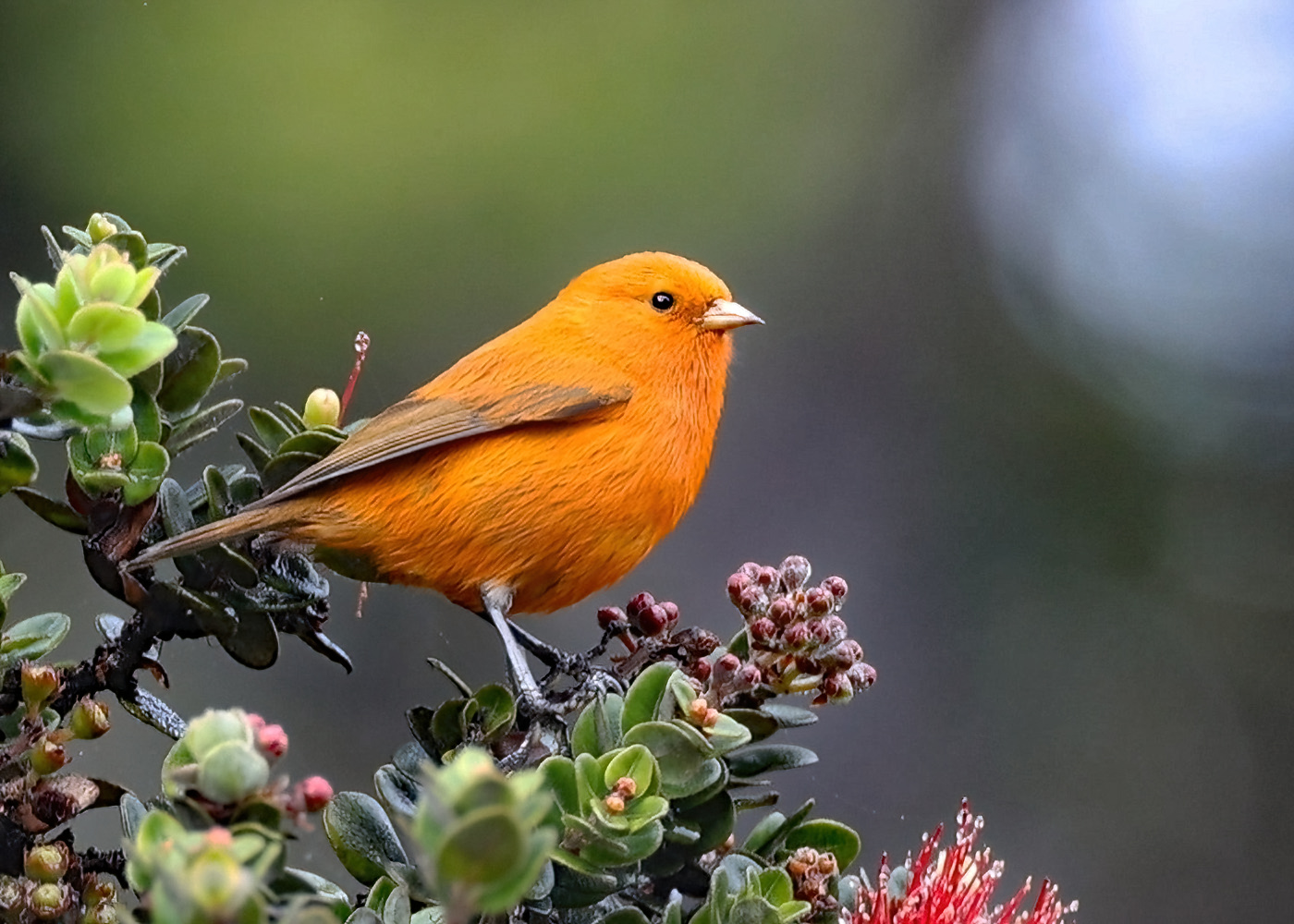
The adult male Hawaiʻi ʻĀkepa is bright orange making it easy to spot in island forests. Hawaiʻi ʻĀkepa are cavity nesters (unusual in Hawaiʻi), finding natural cavities in old growth ʻŌhiʻa and Koa, reminding us of the unique avian treasures found in Hawai’i.
The Friends of Hakalau Forest NWR established an endowment fund in 2015 with the goal of raising $3.5 million. A stable and robust endowment, managed by the Hawaii Community Foundation, is essential to provide a reliable source of funds for the foreseeable future to support the many necessary conservation activities on and around the National Wildlife Refuge.
With your help over the last 10 years, the Endowment has grown very close to $2,000,000. Your gift NOW can help us reach this year’s goal of $2.4 million. Or we can dream of possibly reaching $2.5 million this year!
While ambitious, this goal is possible through the generous donations of our Friends and many other interested parties who see the value in saving endangered Hawaiian birds.
Check out the 2025 Endowment Brochure for more information. Please share widely!
We welcome your contribution to the Endowment (you can donate anonymously if you wish). Please click on the button to access Hawai’i Community Foundation’s secure website
For more information about Hakalau Forest NWR, visit:
- The official page of the Hakalau Forest National Wildlife Refuge
- A location map of the Hakalau Forest National Wildlife Refuge
- Topographic basemap of the Hakalau Unit
- Topographic basemap of the Kona Unit
- Hakalau Forest NWR Comprehensive Conservation Plan (2010)
- Frequently Asked Questions about Hakalau Forest National Wildlife Refuge (topics include what is special about Hakalau, six endangered honeycreepers, public access, environmental education, challenges facing the Refuge and the Endowment details)
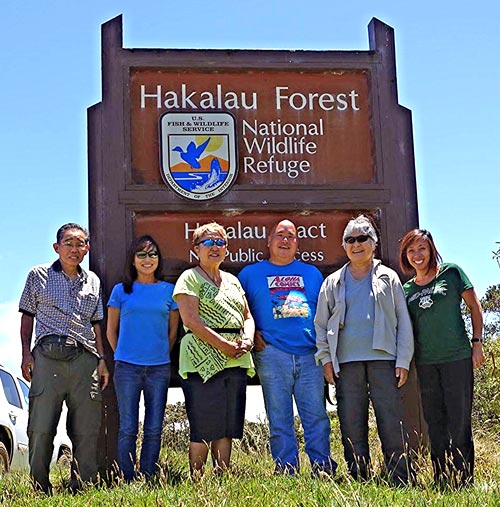
Join

The Friends of Hakalau Forest is a group of hardworking, hands-on committed volunteers and donors who share a passion for supporting the Refuge. When you join the Friends group you become one of nature’s heroes on Hawai’i Island. Feel good about protecting our native forests, and critically endangered birds and plants.
Featured Species
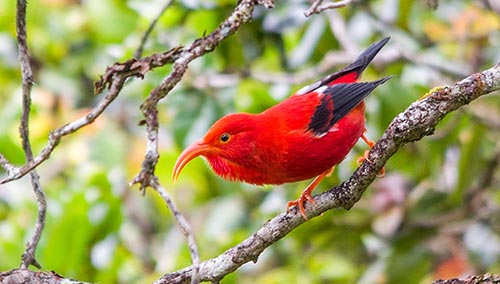
The ‘i‘iwi is the most recognizable bird in the forest, with its scarlet feathers and bright red bill. It is very sensitive to avian malaria, though, and has recently been listed as threatened by the US Fish and Wildlife Service.
©Tim Burr
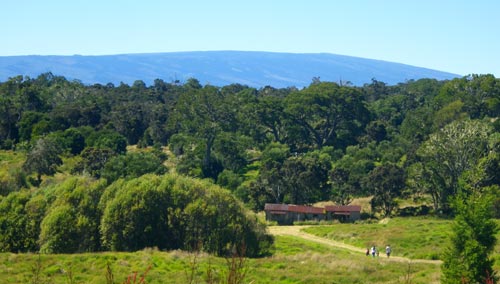
Help establish an endowment to permanently protect the Refuge.
The Friends of Hakalau Forest National Wildlife Refuge sets a goal of $350,000 for the Fall 2024 Endowment Campaign.
Recent Hakalau Forest Research Papers
Quantifying Hakalau Forest Recovery from 1990 to 2024 Using Landsat and Sentinel NDVI Data
Faith A. Nicoll, Elizabeth D. Crook, Michael L. Goulden, 2024
One of the most critical activities that has been underway on the Refuge since its inception has been the planting of koa and other native plants on the pasture lands that were once native forest. These areas are at higher elevations that used to have koa-ohia forest and can provide additional habitat for native forest birds, free of mosquitoes and avian diseases. Although this work has been going on for almost 40 years we have not been able to quantify the recovery of koa-ohia forest. Countless hours of work, including the efforts of many Friends volunteers, has made a meaningful impact on the conservation of the native Hawaiian forest of the Refuge. But how could we measure that impact?
Through a collaboration between the Friends of Hakalau Forest NWR and students and faculty at UC Irvine’s Department of Earth System Science, we have been able to perform a remotely sensed analysis of the reforestation on the Refuge from 1990 through 2024. We thank Faith Nicoll, student researcher at UC Irvine, and her faculty advisors, Dr. Elizabeth Crooks and Dr. Michael Goulden, for their excellent work and important contribution to our collective conservation work on the Refuge. The following summary details the results of that work: Quantifying Hakalau Recovery.
If you missed Faith’s talk at the Annual Meeting, you can view her presentation here.
Gallery
Photos featured in this gallery are by our talented members. For more photos, visit the Friends of Hakalau Forest NWR Group on Flickr.
